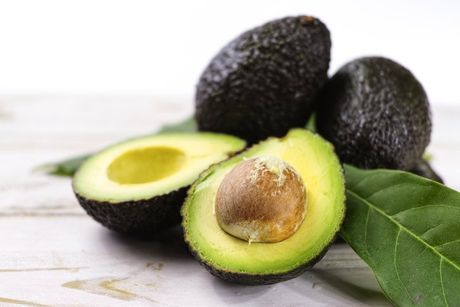Blog Layout
Admin • Oct 14, 2018
Understanding Irrigation Challenges for Avocado Growers

Gobbling up nearly 2 billion pounds
last year, Americans love their avocadoes. Even though most of our avocadoes are exported from Mexico, California still produced over 129,000 tons
of these green fruits.
Thousands of California growers continue to harvest avocadoes on around 60,000 acres according to the Agricultural Marketing Resource Center. These statistics make California avocadoes appear easy to grow and harvest, but they're not. Ultimately, a successful crop is dependent on crucial irrigation water. Here are some challenges you might face as an avocado grower.
Avocadoes Are Not Native to California
Avocadoes originate from the humid climates of central and South America. California climate and rainfall amounts simply cannot compete with a tropical rainfall, and growers must rely on water from irrigation.
Here's why the right water amount is necessary for avocado production:
- Water is necessary for delivering the necessary minerals to all parts of the tree.
- Water supports photosynthesis that aids in growth of the tree and the fruit.
- Water provides turgidity for leaves, helping them intercept the right amount of sunlight.
Without the right amount of irrigation, avocado production lessens and fails as trees become stressed.
Avocadoes Are Difficult to Water
Unfortunately, growers are unable to simply dump the same amount of water every day on their avocado trees. This might work well for other crops, but avocado trees are notoriously picky when it's time to drink up the water.
Avocado trees like their water - they require 40 to 50 inches each year. However, their feeder roots lay mostly within the top 6 inches or so of soil. Also, feeder roots contain fewer root hairs than average. Both of these factors mean avocado tree roots do not absorb water very well despite their need and that the soil around those roots can dry out fast.
Avocadoes Rely on the Right Soil Moisture
Soil type affects irrigation. If your grove contains decomposed granite, water may drain well but too fast, leaving roots dry. On the other hand, a clay soil encourages root rot because it does not drain well. These challenges only highlight the importance of accurately measuring the soil moisture of your grove.
Tree health declines in the presence of too little or too much irrigation. Or water may not hit the tree at the right time during flowering or ripening. This is how irrigation due to improper moisture levels results in poor fruit production.
Avocadoes Need Accurate Soil Moisture Monitoring
A grove is a dynamic environment with differing soil types and elevations, which all play a role in irrigation success. Checking the moisture level in a grove is more than just feeling the ground around a tree with your hand.
For a general assessment, you can test soil by collecting a sample from the root zone by hand and squeezing it. However, a better way to measure moisture is by using a tensiometer, which measures the amount of energy a plant needs to draw water from the ground.
You can also use a tensiometer to indicate how much water a tree needs. This helps you regulate water by deciding when to turn on and off an irrigation system. You can further conserve water simply by monitoring and responding to their irrigation system
and tree growth status.
- Cap off irrigation points to diseased and dying trees not producing fruit
- Perform daily inspections for leaks
- Maintain low tree skirts
Recent introduction of newer avocado varieties to California could open up the possibility of harvesting year round. While this means greater economic opportunities, it also means a greater demand for irrigation water.
This new outcome stresses the importance of having an efficient irrigation system suited for California's climate. Discuss your irrigation needs with an expert at Waterford Irrigation Supply.
Waterford Irrigation Supply
12500 Bentley Street
Waterford, CA 95386
Phone:
209-874-1386
Fax:
209-874-1381
Email:
sales@waterfordisi.com
Waterford Irrigation Supply - Atwater Store
7016 Atwater Jordan Road
Atwater, CA 95301
Phone:
209-358-1685
Email:
sales@waterfordisi.com
Be the first to review us
Your feedback is important!
Business Hours
Mon – Fri: 8 a.m. – 5 p.m.
CAIA (California AG Irrigation Association)
Free Estimates, Free Consultation






Content, including images, displayed on this website is protected by copyright laws. Downloading, republication, retransmission or reproduction of content on this website is strictly prohibited. Terms of Use
| Privacy Policy

